12. GLORY

THE LAST DAYS OF THE GILDED AGE
ITALY
CONTENTS
 Problems with unity Problems with unity
 Italy and the Catholic Church Italy and the Catholic Church
 Social problems Social problems
 The monarchy The monarchy
 Italian imperialism Italian imperialism
 Italy ... around the year 1900 Italy ... around the year 1900
The textual material on page below is drawn directly from my work
A Moral History of Western Society © 2024, Volume Two, pages 52-55.
Italy
was finding that as difficult it had been to create Italy, it was
proving to be even harder to create Italians. Most Italians saw
themselves as Venetians, Genoese, Florentines, Sienese, Romans,
Neapolitans, Sicilians, etc. well before they recognized themselves as
Italians. These local identities had been at the heart of their
economic competitions and wars for countless generations ... and it was
very hard for them to rise above those local loyalties to take on the
primary identity as Italian. Part of the problem also was that
those who had supported the Risorgimento had been mostly a relatively
small group of urban upper-class intellectuals ... and not really the
vast peasant population who simply watched the unfolding of events and
the creation of Italy from the sidelines. Most Italians had not
themselves invested much in the creation of the new Italian
state.
Also, now that the young political idealists had achieved the dream of
a united Italy wrested from the hands of surrounding powers, they had
no similar national challenges still facing them, ones that could
continue to draw them together in a spirit of ongoing national
unity. The Risorgimento had achieved its goals ... and there was
no similar burning sense of what was supposed to happen next. |
TALY AND THE CATHOLIC CHURCH |
| Also, Italy was a very Catholic
country ... and the hatred of the Church for the constitutional
monarchy that had taken away the Church’s vast landholdings made it
difficult for the devout Catholic Italians to love their new
government. The new Italian state was constantly denounced from
the local pulpits ... and particularly by Pope Pius IX (Pope:1846-1878)
who hated what had been done to the Church and considered himself a "prisoner of the Vatican."
|
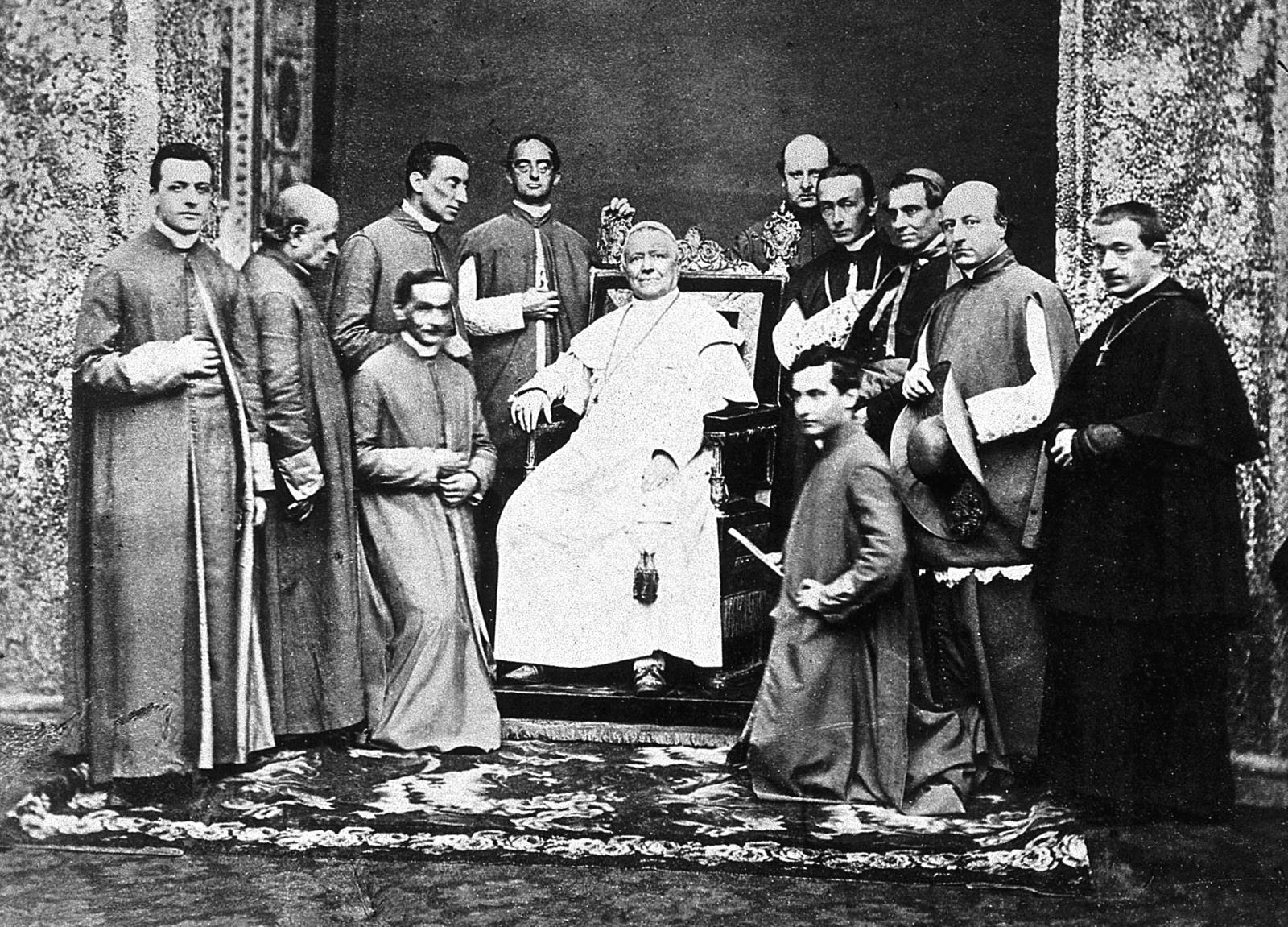
Pope Pius IX and a number of Cardinals
|
Poverty
Italy was a poor country, with a high mountain range
running north and south through the middle of the country.
Industry was still in its infant stages ... and agriculture was the
economic mainstay of the country ... though even here productivity was
very low. Much of the population lived near the starvation level
and disease was rampant. Nonetheless even in the face of these
problems, the rate of population growth was extremely high ... pinching
Italy even more. As a result, sadly one of Italy’s major
“exports” was its population, which went abroad in the hopes of finding
a better life elsewhere. Expatriates did indeed help finance life
in Italy, sending money back home to their families. Many would
also return to retire in their homeland where their savings would carry
them further in life.
Illiteracy
Literacy was very low, especially in the south where
even as late as 1870 only about one tenth of the population could read
and write. Even in the somewhat more prosperous north hardly half
of the population could read and write at that time. But efforts
to improve Italian education in the early years of the twentieth
century would begin to have an impact on this problem... though even as
late as 1914 over a third of the population was still illiterate.
Political corruption
Italian politicians tended to look only to
their own political careers ... not being vitally interested in issues
larger than their own personal success. Political parties were
numerous and actually only small groupings centered around key
individuals, the groupings held together by the favors these
individuals drew from their political office and were able to pass on
to their personal following. This in turn produced terrible political
instability as governments in Rome rose and fell simply on the basis of
personal politics.
Taxes were very heavy on the tightly stretched Italian population ...
and governments were not inclined to keep expenses in line with Italy’s
actual ability to afford the projects produced by the government.
Thus for many Italians, the state seemed to be no less an oppressor
than had been the earlier governments, whether local or foreign.
In the south of Italy people continued to look to the local Mafia
organization to supervise local life rather than to the distant Italian
government in Rome.
Real growth
And yet ... Italy did begin to register real growth
as the 1800s closed out and the twentieth century opened up.
Coming from so far behind economically it was of course easy to
register high rates of growth ... but in fact Italy was definitely
moving ahead in terms of industrial production (despite Italy’s own
lack of coal and iron deposits), railroad mileage, new port facilities,
drainage of swampland and improvement of agricultural yield.
|
Victor Emmanuel II, who had led the risorgimento to
its victory, died in 1878 ... not long into the life of the new
state. His place was taken by his son Umberto I, who reigned over
Italy until his death in 1900 when he was killed by an anarchist’s
bullet (he had escaped two previous assassination attempts). His
22-year reign however had been much less illustrious than that of his
father. Umberto was a very passive king who preferred to let the
politicians do the heavy lifting while he mostly watched from the
sidelines. Sadly he did little to pull Italy together as it slid
into a political lethargy that threatened even more the thin unity
holding the country together.
His place was taken by his son Victor Emmanuel
III (reigned 1900-1946). Despite the high hopes the country had
that this energetic young prince would be able to pull Italy back
together the passing of time proved that he really did not have the
strength to discipline the chaos of the various party bosses ...
including his prime minister Giolitti, who was in and out of office
five times in the period 1892-1921, and who also followed the political
trend of using his office simply for his own personal political good.
|
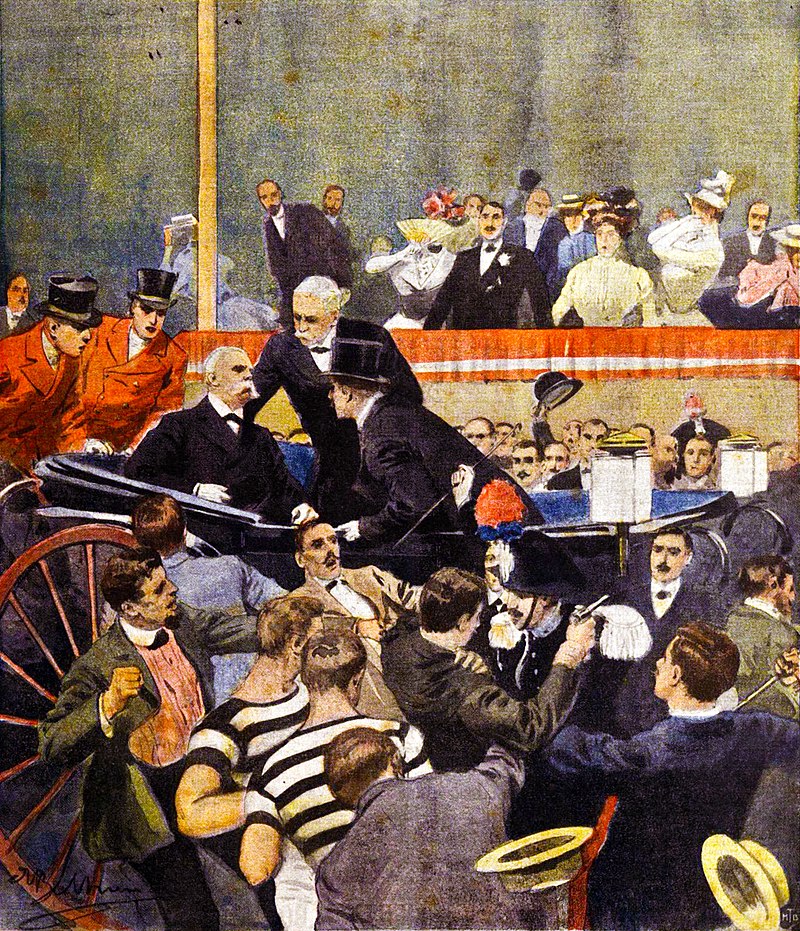
King Umberto is killed in Monza by Gaetano Bresci - July 29, 1900 - by Achille Beltrame
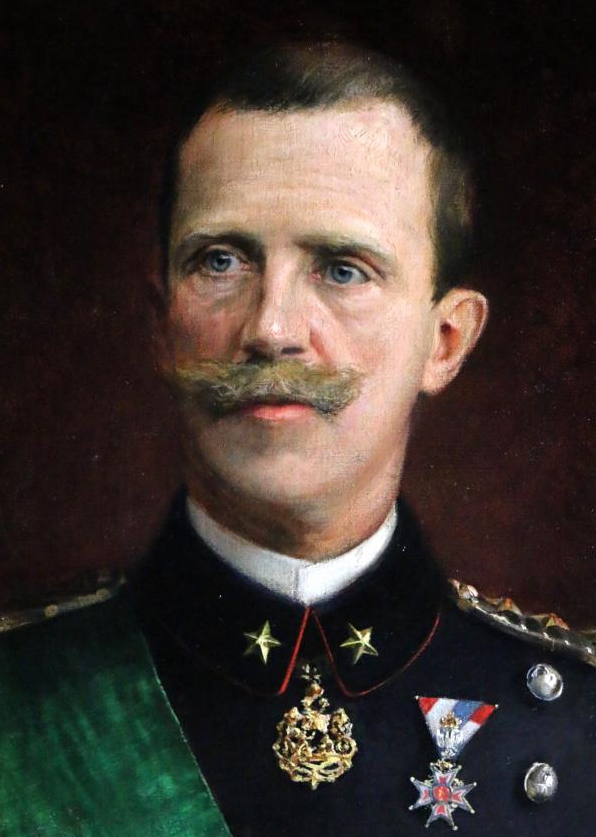
Victor Emanuel III (reigned 1900-1946)
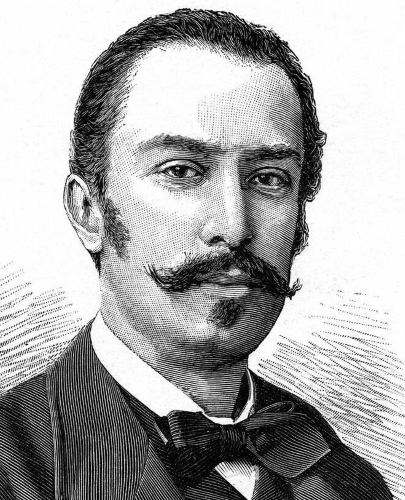
Giovanni Giolitti - at the outset of his political career
One of the keys to successful
nationalism seemed at the time to be the securing of an overseas
empire. Thus Italian nationalists put in place an imperial
strategy ... but found the pickings overseas for Italian colonial
territory to be quite slim. Most of the prime territory in Asia
and Africa had been grabbed. This left only the sandy wastes of
North Africa and the horn of East Africa available for seizure.
The Italians were most desirous of Tunisia, just opposite the Italian
island of Sicily. But to the immense distress of Italy, the
French grabbed that territory in 1881 ... which by way of bitter
reaction drove Italy in 1882 to join with Germany and Austria-Hungary
in forming the Triple Alliance.
This would mark the beginning of diplomatic troubles that would not
only divide Europe into two contending camps ... but would ultimately
lead Europe into the "Great War" (World War One).
Things at this point did not get much better for Italy in the imperial
realm. An attempt to seize the Christian kingdom of Abyssinia
(Ethiopia) resulted only in the humiliating defeat of Italian troops in
1896 by local Ethiopian troops, ending that venture (for a while
anyway). Italy then moved its focus to the North African lands of
Tripolitania and Cyrenaica ... bombing from their new airplanes (the
Italians proved to be much better at aerial combat) Bedouin troops ...
and occupying in 1912 the few towns of a region they would unite and
then assign to this new piece of imperial territory the ancient Roman
name "Libya."
ITALY ... AROUND THE YEAR 1900 |
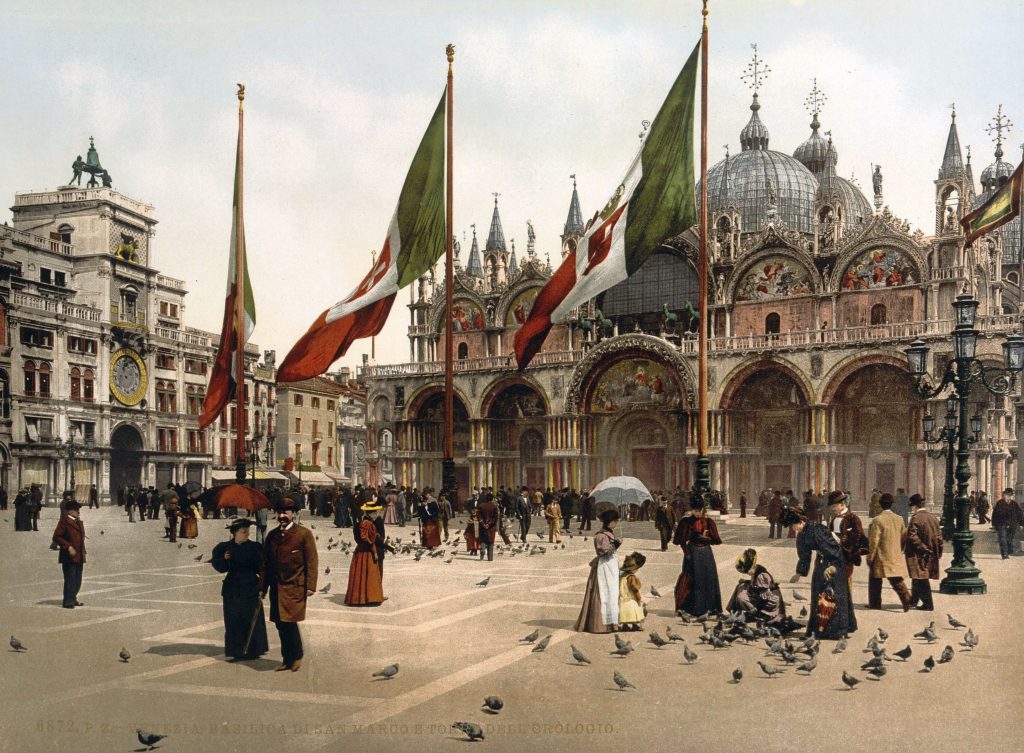
Venice - Piazza San Marco
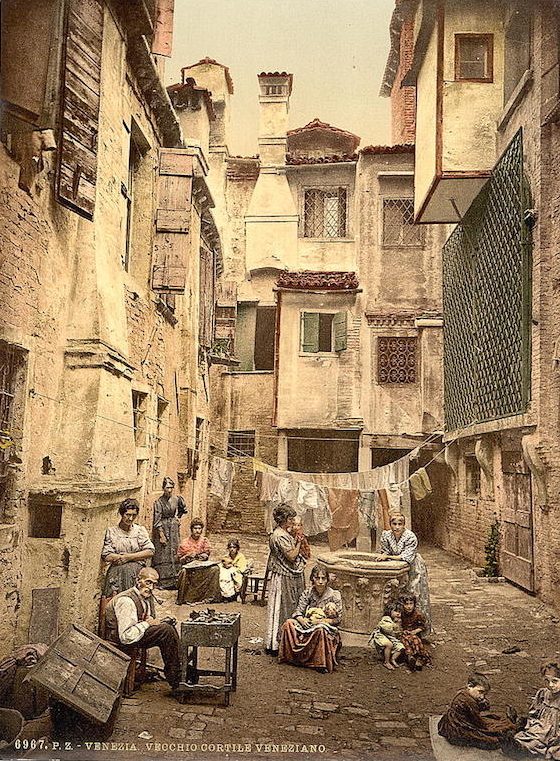
A courtyard in Venice
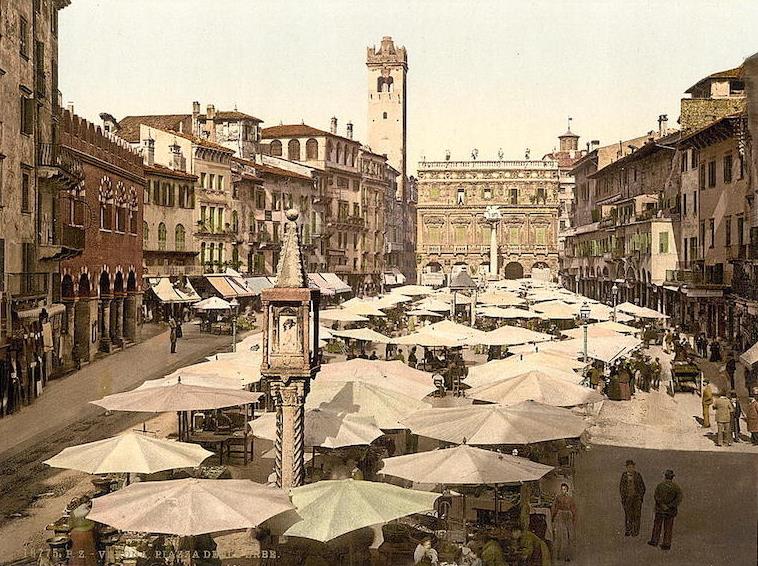
Verona - Piazza delle Erbe
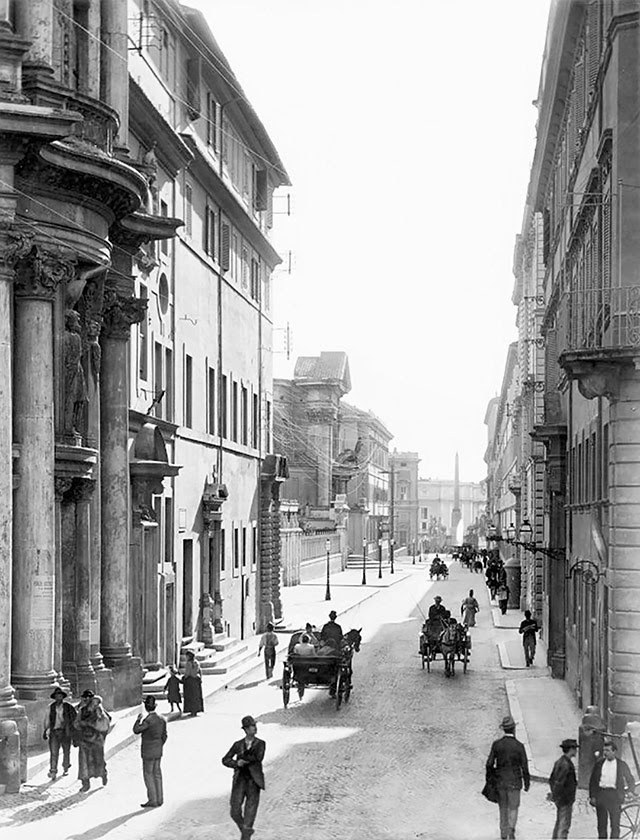
Rome - Via XX Septembre
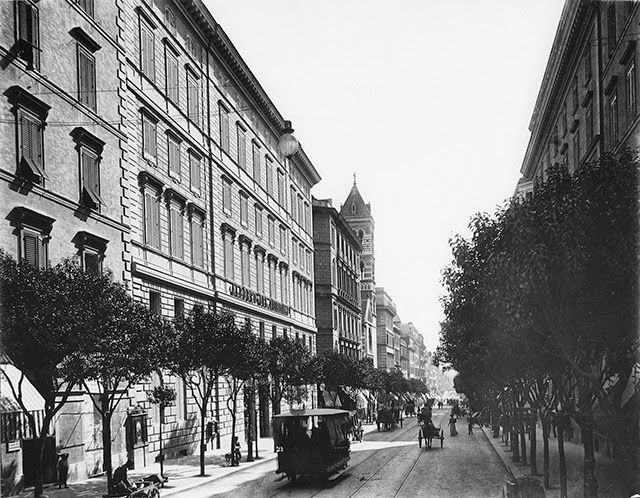
Rome - Via Nazionale
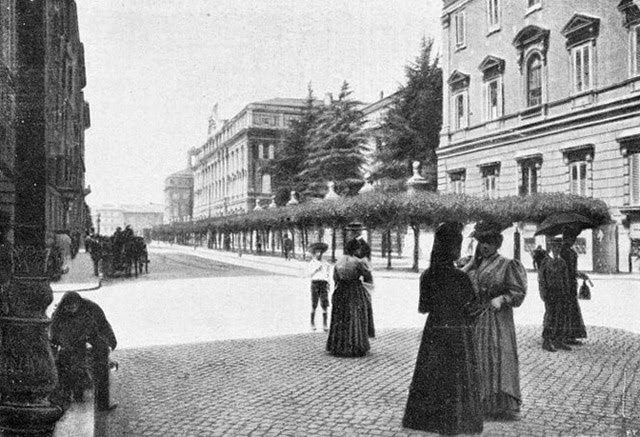
Rome - "Great Palace"
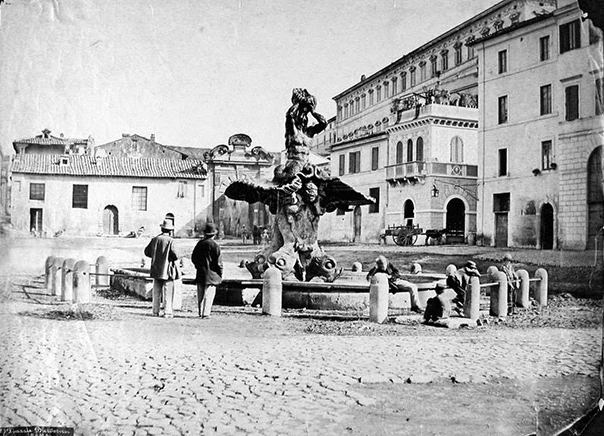
Rome - Piazza Barberini
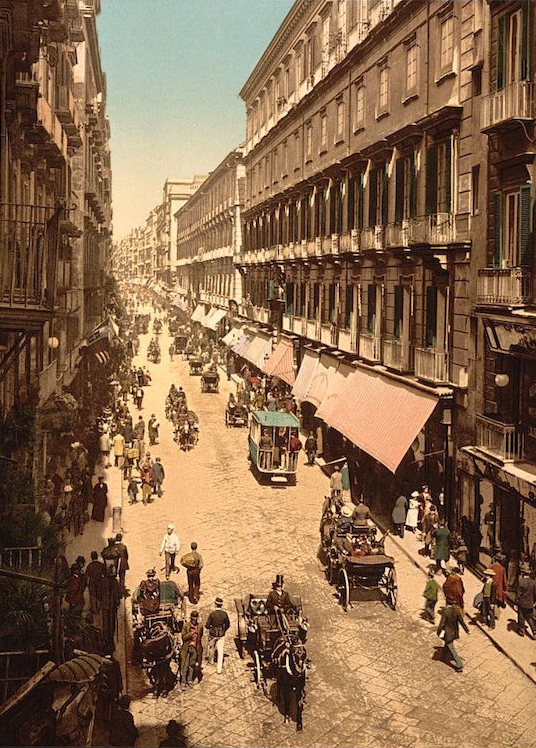
Naples - Via Roma

Naples

Go on to the next section: Spain
 Miles
H. Hodges Miles
H. Hodges
| |


 Problems with unity
Problems with unity
 Italy ... around the year 1900
Italy ... around the year 1900


















